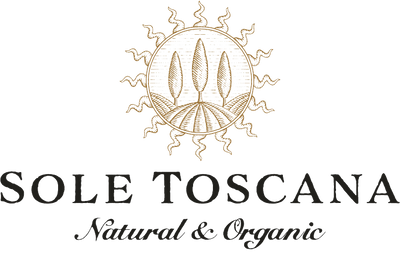Did you know there's an agent in your skin that creates a protective barrier by hosting billions of invisible warriors that protect you from the elements?
This microscopic army is real, as proven by scientists.
KNOW YOUR MICROBIOME
You may have heard about the gut microbiome, which is the entire collection of microorganisms in the digestive system. The gut microbiome contributes to good health.
BUT WHAT IS THE SKIN MICROBIOME?
You might know from biology studies in high school that the skin is made up of 3 layers.
ORIGINAL LAYERS OF THE SKIN
But as you inspect these layers, you discover there are seven layers in reality. These layers aid the skin in sensing by feeling, regulating our temperature, and protecting us from numerous elements in our environment.
EPIDERMIS
The epidermis is the topmost layer of skin, the one we see and feel. It consists of 5 separate layers. These layers prevent evaporation of water, make new skin cells, and give the skin its appearance.
This layer also has diverse cells that protect against abrasion, send messages to your brain, and are a vital part of your immune system.
DERMIS
The dermis has numerous functions that include sending signals to the brain using nerve endings, sweating to keep you cool, eliminating toxins, and helping you feel your surroundings. Also, it brings blood to feed your skin and carry away toxins via blood vessels, produces oil to keep your skin soft and waterproof, and sustains your hair growth cycle.
SUBCUTANEOUS FAT LAYER
The layer at the bottom is the subcutaneous fat layer. It assists the dermis blood vessels to maintain appropriate body temperature and has fat cells that cushion the body from physical trauma to muscles, internal organs, and bones.
In case you undergo starvation, the body uses this fat to provide energy for its various processes, thus strengthening your chances of survival.
The new outer shell – skin microbiome
Science is now studying a different ecosystem, the skin microbiome.
It's surprising that we still have even more to discover about a part of the body we see and interact with every day.
THE SKIN'S FLORA
Genetic testing breakthroughs have recently enabled scientists to amplify and distinguish between the various flora residing on the skin. Through advanced research of the skin surface, scientists have confirmed that an outer biome exists, and it is home to millions of microorganisms.
This biome supports your skin's barrier function. Results from studying the biome show balancing the skin microbiome can contribute to clear skin and excellent overall health.
Threats to your skin microbiome
Our skin is under constant assault from chemical-laden products, environmental agents, harsh cleansers and soaps, deodorants, and medications.
The skin microbiome is our primary line of defense against these threats. With this knowledge, we can now be conscious to ensure we are supporting its ability to protect us.
Five ways to keep your skin microbiome healthy
1. Green your products
We need to stop adding chemicals and toxic ingredients to our skin. And this goes beyond skincare.
WHAT DOES THIS ENTAIL?
Greening your products includes all the products that are in contact with your skin. We're talking about body care, hair care, cleaning products, skincare, sanitation solutions, oral hygiene, and laundry detergents, among others.
Going the non-toxic route can seem impossible, but try replacing one product or one category at a time. Eventually, you will replace them all with natural alternatives.
2. Go easy on cleansing + exfoliating
Cleansing the skin more than twice a day, continually sanitizing our hands, and exfoliating daily removes good bacteria, upsetting the balance of our ecosystem. Our obsession with cleanliness causes more harm than good for our skin.
When our skin is in this state, we are more susceptible to infection, irritation, and other undesirable skin conditions.
KEEP YOUR SKIN'S PROTECTIVE BARRIER INTACT
In the past, skincare marketing encouraged the public to crave squeaky clean skin after cleansing. However, this is harmful. Your cleansing method should never remove the skin's natural protective barrier and leave you with a tight, dry feeling. Exfoliating the skin every day doesn't help either.
You should aim for hydrated, balanced skin. Over-cleansing or over-exfoliating will destroy your skin's acid mantle and make moisture retention difficult.
BE KIND TO YOUR MICROBIOME
The above actions throw your skin microbiome out of balance with possible negative consequences for your overall health and wellbeing.
Be kind to your microbiome by using a pH-balanced cleanser and exfoliate once a week or every two weeks, not daily.

3. What touches your skin?
Beyond products, your skin touches lots of other stuff, such as your cosmetic brushes. These harbor microorganisms whose levels grow each time you use them. Develop a habit of washing your brushes often.
YOUR CLOTHES
Consider the fabric you wear regularly. Researchers have investigated microbial growth in natural vs. synthetic clothing.
They report that microbial communities in natural fibers imitate the ones in our skin microbiome, while synthetic materials contain bacteria that are out of balance with the human skin ecosystem.
GO NATURAL
Also, synthetic clothes bind and collect bacteria more compared to natural (cellulose-based) fibers.
4. Dirt is good
This sounds contradictory, but hold on.
DON'T OVER-STERILIZE
Getting rid of ALL the bacteria, germs, and other microorganisms from your environment isn't healthy. Studies show that kids in households that use chlorine-based sanitizers and cleaners have higher incidence rates of allergies, asthma, viral infections, and other immune dysfunctions.
Instead of eliminating them, we need to keep these organisms in a healthy balance.
BRING THE OUTSIDE INSIDE!
One of the ways of developing a healthy microbial environment in your home is by getting a dog. Studies have proven that kids in households with dogs experience fewer allergies because dogs bring in good bacteria from the environment.
Other measures include airing out your home, playing in the sand at the beach, getting outside into nature, going barefoot in backyard dirt, or getting your hands in soil as you do gardening.
5. Strengthen your microbiome
Internal prebiotics and probiotics (in the form of supplements or food) balance the gut microbiome and the skin's ecosystem, so you get twofold benefits.
Aside from consuming probiotics in food, consider a skincare routine that includes probiotic ingredients to keep your skin microbiome healthy.
PROBIOTIC SKINCARE
The research into skincare products that contain probiotics is still ongoing. Some scientists doubt whether it is possible to have an effective stabilized probiotic in a skin product that you can store in your cabinet.
Others show clear proof of the positive effects these products have on the skin.
USEFUL INGREDIENTS
Lactobacillus Ferment Lysate balances the skin pH and strengthens its moisture barrier.
Lactococcus Ferment Lysate strengthens your skin's natural defenses against free radicals. The postbiotic Filiformis aids in balancing your skin's microflora and improve hydration.
Take charge of your skin health
With discoveries such as the skin microbiome, we can take better care of our skin and overall health.
With love,
The Sole Toscana Beauty Team


